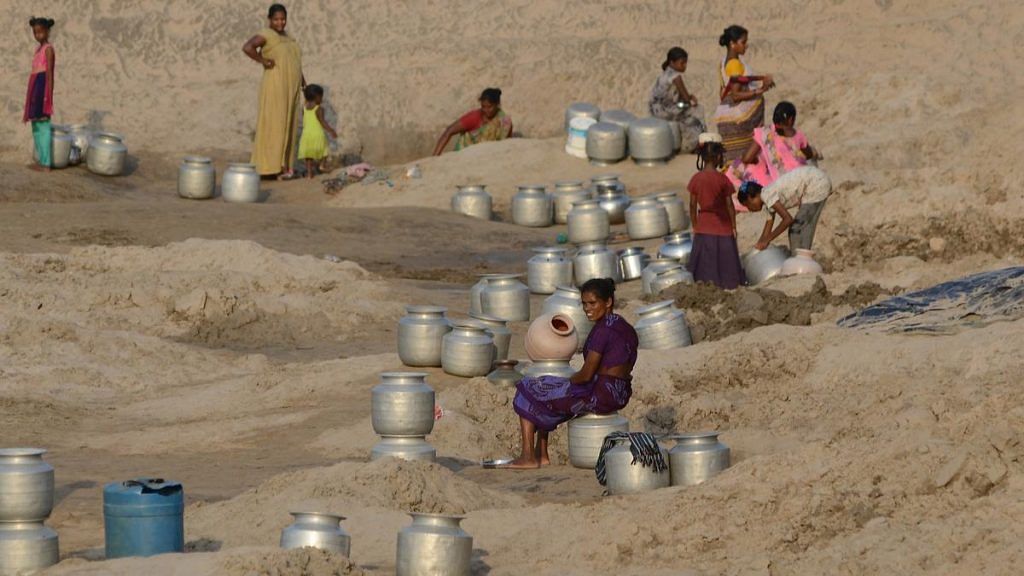New Delhi: Extreme heat due to climate change is likely to kill 15 lakh more Indians annually by the end of the century if high emissions of greenhouse gases continue, a report released Thursday by the Tata Centre for Development at the University of Chicago has said.
The report shows India is likely to see a four-degree rise in average annual temperature by the year 2100, from about 24 degrees to 28 degrees Celsius.
The national capital of Delhi will also see the number of ‘extremely hot days’ — when the temperature is over 35 degrees Celsius — go up to 67 from the 2010 figure of 3.
Impact on states
Punjab is currently the hottest state in India, with an average temperature just below 32 degrees Celsius. By 2100, this is expected to rise to 36 degrees Celsius.
The report says 16 of India’s 36 states (before the bifurcation of Jammu and Kashmir into two union territories) are expected to become hotter than Punjab currently is.
Odisha, meanwhile, is expected to see the highest increase in the number of extremely hot days — it registered just 1.62 such days in 2010, but is expected to notch up 48 to by the end of the century.
Himalayan states are projected to see the highest increase in average summer temperatures, the report adds.
This spike in temperatures will have an adverse impact on the mortality rate. Uttar Pradesh is expected to bear the brunt of it with a projected annual death rate of 4,02,280, while Bihar, Rajasthan, Andhra Pradesh, Madhya Pradesh and Maharashtra are all expected to see over 1 lakh deaths per annum. These six states are set to account for 64 per cent of all deaths caused by the rising temperatures.
‘Worrying future’
At the launch of the report, Amir Jina, environmental and developmental economist and assistant professor at the University of Chicago, said: “Having already seen 2,500 deaths due to heat in 2015, the future is going to be even more worrying if India — and the world — does not change course to mitigate the harmful effects of climate change.”
Jina said India is poised to become one of the largest emitters in the future, with energy use expected to double by 2040, and a lot of this energy coming from coal.
Meanwhile, Union Jal Shakti Minister Gajendra Singh Shekhawat, who was also present at the event, said there is a “tug of war” between the developed and the developing world.
“The developed nations don’t want to give up their lifestyles, while the developing world does not want to give up its right to development,” he said, adding that all countries are likely to be affected by climate change directly or indirectly.
‘People will adapt’
However, Kamal Kishore, member of the National Disaster Management Authority, said though the report is shocking, its methodology of calculating averages from the global model does not make sense. Kishore said culture, occupation and people’s inherent vulnerability or resilience has to be considered before calculating the mortality rate due to climate change.
“A person living in Rajasthan will be fine at 39 degrees Celsius. But a person in Shimla will feel stressed at 34,” he said.
Kishore also pointed out that mortality from natural disasters has been declining in India over the last 10 years, and as the climate changes, people and societies will adapt and build resilience.
“There is no denying that there will be more hot days, but that does not mean that society will be sitting passively,” he added.
However, Michael Greenstone, faculty director at the TCD, said the report can be accurately applied to the district level in India, and can be used by local government and civic bodies to help prepare for the future.
Also read: It will cost the world $300 billion to halt & fix the global warming problem
